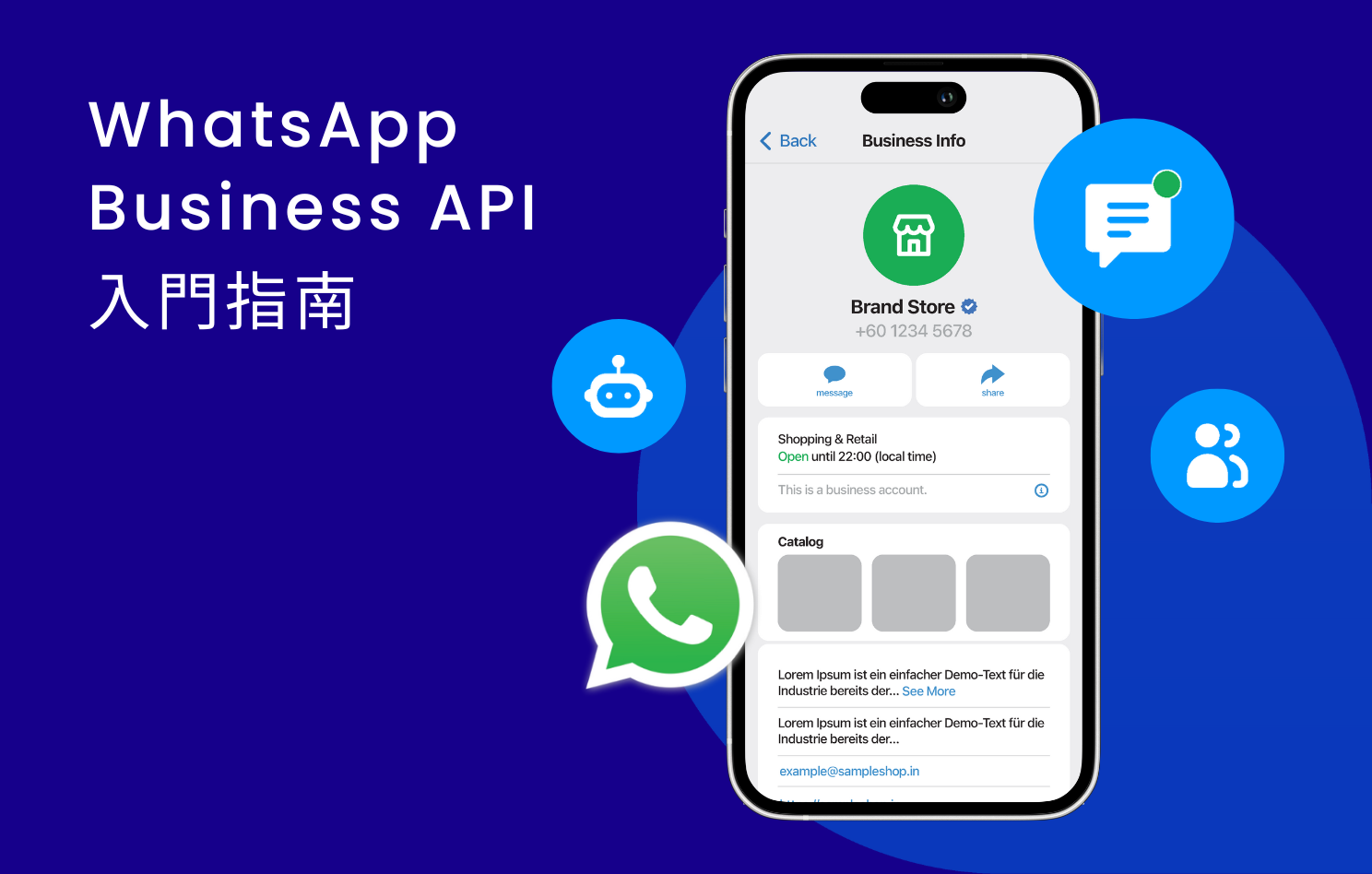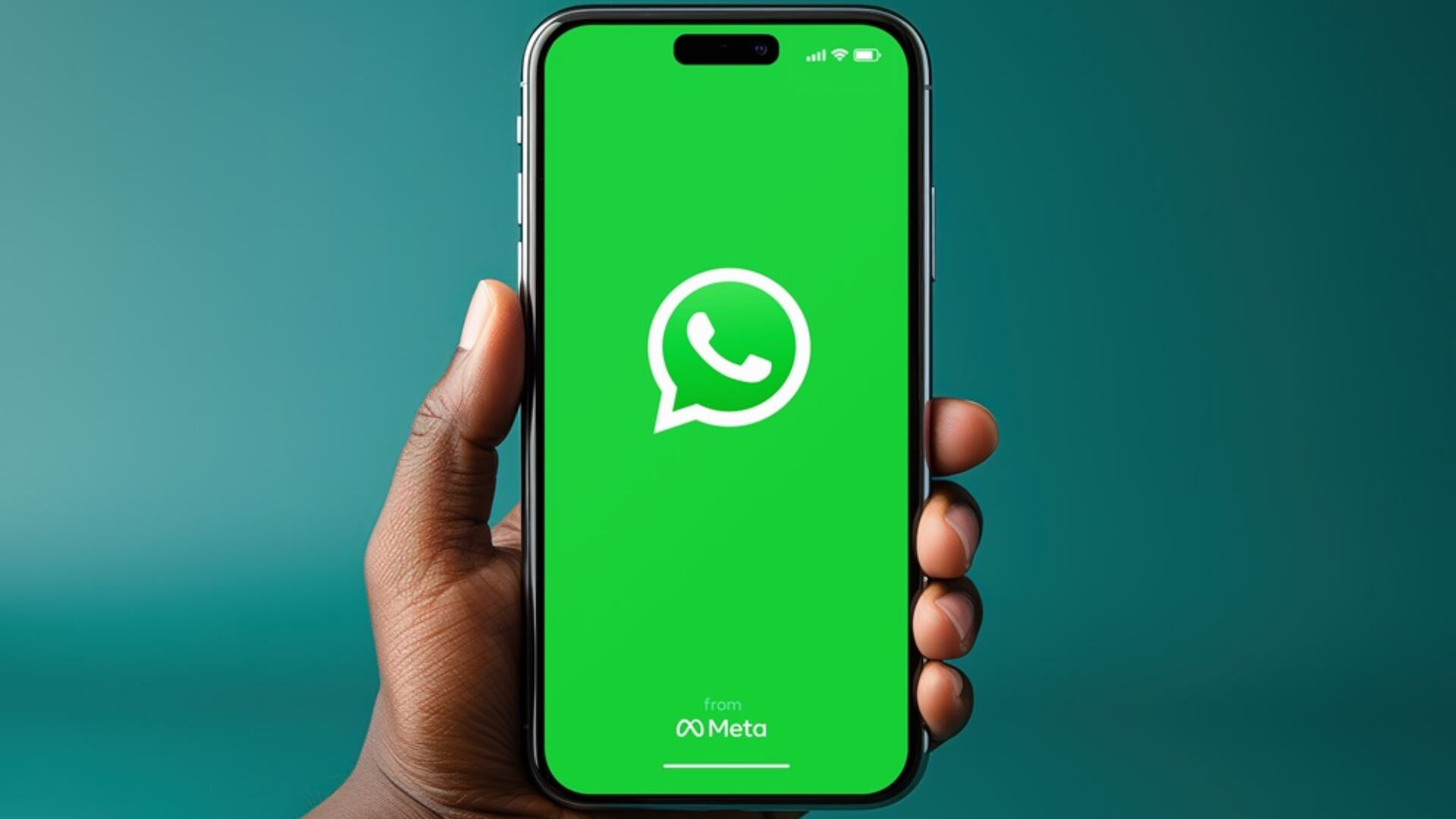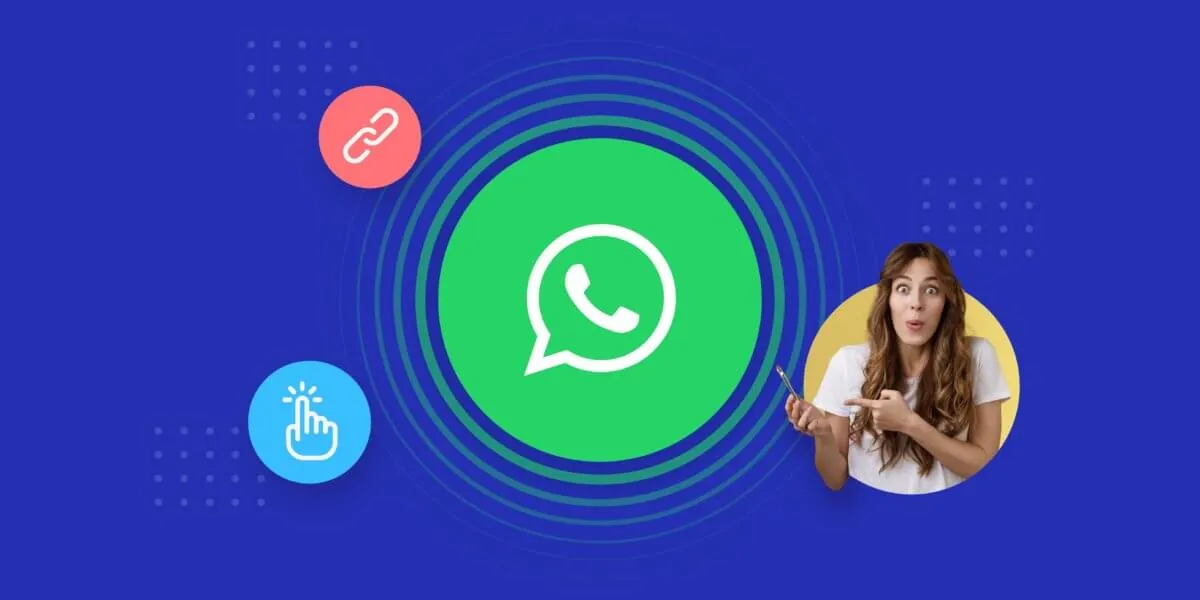In WhatsApp marketing, key metrics include delivery rate (reaching 98%), read rate (average 89%), click-through rate (approx. 23%), conversion rate (approx. 5-8%), and customer reply rate (approx. 40%). For example, sending personalized offers via broadcast lists and following up with interactive messages within 24 hours can effectively boost conversion. Furthermore, using short links to track click behavior and optimizing sending times can increase engagement.
Analysis of Message Delivery Rate
In WhatsApp marketing, the message delivery rate is one of the core indicators for evaluating communication efficiency. According to industry data, the average delivery rate is approximately 98%, which is significantly higher than email (approx. 85%) or SMS (approx. 95%). A high delivery rate means your messages are more likely to reach target customers, avoiding wasted resources. For example, if you send 10,000 messages, a 98% delivery rate means 9,800 people actually received the content, and only 200 may have failed due to invalid numbers or network issues. This directly impacts subsequent interaction and conversion opportunities, making optimizing the delivery rate the crucial first step to improving overall marketing ROI.
The Delivery Rate refers to the proportion of messages successfully delivered to the target user’s device. The calculation is: Delivered Messages ÷ Total Messages Sent × 100%. For instance, if 5,000 messages are sent and 4,900 are delivered, the delivery rate is 98%. In practice, a delivery rate below 95% usually warrants checking number quality or account health.
Key factors affecting the delivery rate include number validity, network status, and platform restrictions. Statistics show that invalid numbers (such as disconnected or unregistered numbers) cause about 70% of delivery failures. It is recommended to regularly clean the contact list and remove invalid numbers. For example, monthly list updates can reduce the delivery failure rate by 15%. Additionally, network latency or weak signals can cause 5-10% of messages to be delayed, especially during peak hours (e.g., local time 18:00-21:00). To mitigate this, avoid sending during peak times and choose periods with lower traffic (e.g., 10:00-12:00).
WhatsApp officially imposes sending frequency limits on business accounts. Sending too many messages in a short period may trigger risk control, leading to a drop in the delivery rate. For instance, sending over 50 messages per minute or over 1,000 messages daily may cause the delivery rate to drop from 98% to 90%. It is advisable to control the sending speed, such as 20-30 messages per minute, and send in batches to maintain stable delivery.
User blocks or reports also reduce the delivery rate. If a single number is blocked by more than 5 users, the delivery rate for that number may permanently drop by 20%. Therefore, ensure the content is relevant and not spam. Tests show that sending personalized content (such as messages with the user’s name) can reduce the blocking probability by 30%.
Below is a comparison table of common delivery rate issues and optimization strategies:
|
Issue Type |
Occurrence Probability |
Impact on Delivery Rate |
Optimization Suggestion |
|---|---|---|---|
|
Invalid Numbers |
25% |
-5% |
Clean the number list monthly, remove numbers inactive for over 90 days |
|
Network Issues |
15% |
-3% |
Avoid sending during peak hours, prioritize Wi-Fi environments |
|
Platform Restrictions |
10% |
-8% |
Control sending frequency, keep it below 30 messages per minute |
|
User Blocks |
5% |
-2% |
Send personalized content, reduce mass sending frequency to 1-2 times per week |
Monitoring the delivery rate requires tools such as the WhatsApp Business API backend or third-party analytics platforms (like Meta Business Suite). It is recommended to review the data weekly. If the delivery rate is below 95% for 3 consecutive days, immediately check the number list and sending pace. In one case, an e-commerce brand optimized its sending time (changed to 11:00-13:00), increasing the delivery rate from 93% to 97% and simultaneously saving 15% of marketing costs. 
Contact List Growth Strategies
In WhatsApp marketing, the size and quality of the contact list directly determine reach and conversion potential. According to industry data, for every 1,000 effective contacts added, the message open rate can increase by 15%, and the conversion cost is reduced by 20%. For example, an e-commerce brand that accumulated 50,000 contacts over six months saved about $3,000 USD in monthly advertising costs, while maintaining a stable conversion rate around 8%. However, blindly pursuing quantity can increase the proportion of invalid numbers (which drags down the delivery rate when exceeding 10%), so the focus should be on high-quality growth strategies.
The core of contact list growth lies in legal acquisition and users’ explicit consent to join. According to GDPR and WhatsApp policies, adding numbers without explicit consent poses a risk of account blocking (probability around 5%). The most effective method is guiding users to actively subscribe through online and offline channels. For instance, embedding a subscription pop-up on a website typically yields a conversion rate of 3-5%. With 10,000 daily visitors, this can acquire 900-1,500 new contacts per month. Physical stores can attract users through QR code discount events, such as “Scan to add friend and get 15% off,” with a conversion rate up to 15%, adding 50-100 new people weekly.
The design of content incentives directly impacts the growth speed. Tests show that offering immediate value (such as exclusive discount codes or a free e-book) doubles the conversion rate compared to a simple invitation. For example, an educational institution offering a “Add friend to get a 7-day course trial” acquired 2,000 contacts in a single month, with a cost per number of only $0.2 USD (traditional advertising customer acquisition cost is about $1.5 USD). Furthermore, limited-time offers can increase urgency: discounts valid for 24 hours can temporarily boost the conversion rate by 40%.
Cross-channel integration can amplify the growth effect. Syncing the WhatsApp subscription link to email signatures, social media profiles, and online forms increases visibility. Data shows that multi-channel promotion is 60% more efficient at acquiring numbers than a single channel. For instance, a brand added a subscription link to its Instagram bio, acquiring 300 new contacts monthly from that channel, while an added button at the end of emails brought in 200 per month.
List quality maintenance is equally crucial. The proportion of invalid or dormant numbers should be kept below 5%; otherwise, it will reduce the overall engagement rate. It is recommended to clean the list every 90 days, removing numbers that have not interacted for over 6 months. In a case study, a retail brand that regularly cleaned 20% of its dormant numbers saw its overall delivery rate rebound from 92% to 97%, and the message open rate increased by 12%.
Automation tools can enhance growth efficiency. Using QR code generators (such as the tool built into the WhatsApp Business API) allows users to join with a single scan, reducing operational steps. Tests show that users who join by scanning a QR code have a 30% higher engagement rate than those who manually input. Additionally, integrating a CRM system to automatically sync new customer numbers can save 50% of manual input time.
User Engagement Performance Evaluation
In WhatsApp marketing, user engagement rate is the core indicator for measuring the appeal of message content. According to industry data, the average engagement rate is about 18%, but successful campaigns can achieve over 40%. For example, if a promotional message receives 5,000 views, 800 replies, and 200 forwards, its comprehensive engagement rate is 20%. High engagement rate is directly correlated with conversion effectiveness—for every 5% increase in the engagement rate, the sales conversion rate increases by an average of 1.2%. Therefore, accurately evaluating and optimizing engagement performance is a critical step in boosting marketing ROI.
User engagement performance is primarily quantified by three metrics: View Rate, Reply Rate, and Forward Rate. View Rate is the proportion of users who actively tap to open the message, with an industry average of 75%. If 10,000 messages are sent and 7,500 are opened, the open rate is 75%. A rate below 60% usually means the title or preview text is not engaging enough. For example, A/B testing showed that including the user’s name in the preview text (e.g., “Mr. Zhang, your exclusive offer is waiting”) can increase the open rate by 15%.
Reply Rate reflects the user’s willingness to actively reply to the message, calculated as: Number of Replies ÷ Number of Delivered Messages × 100%. A healthy value should be above 8%; if it falls below 5%, the content strategy needs optimization. In one instance, an e-commerce brand achieved a 12% reply rate after sending a “limited-time discount code” message, while general event notifications only reached 3%. The key is designing interactive incentives:
Messages containing clear calls to action (e.g., “Reply YES for a quote”) have a reply rate 2.5 times higher than open-ended content. Furthermore, users who reply within 1 hour of sending have a 40% higher long-term value than silent users.
Forward Rate measures the message’s viral potential, which is the proportion of users who share the content with other contacts. The average is about 2%, but high-value content (such as exclusive discounts or entertaining information) can exceed 5%. For example, a travel brand’s campaign, “Share with friends to jointly receive double points,” saw the forward rate surge to 7%, bringing in an additional 300 new contacts.
The time pattern of engagement significantly affects the data performance. 65% of interactions occur within 1 hour of message delivery, and 90% are completed within 24 hours. Therefore, the sending time must match the user’s active hours: data shows that the engagement rate between 14:00-16:00, Tuesday to Thursday, local time, is 20% higher than on weekends. If the target users are office workers, the reply rate peak during the 12:00-13:00 lunch break can reach 15%.
The type of content is closely related to the intensity of interaction. Messages with images have a 30% higher reply rate than plain text, and short videos (duration 15-30 seconds) have a 50% higher forward rate. However, attention must be paid to file size: videos exceeding 5MB can cause loading delays, leading to a 10% drop in the open rate. Text length also needs to be controlled; messages under 100 characters have a 25% higher engagement rate than longer texts.
Continuous monitoring of engagement data can reveal optimization opportunities. It is recommended to analyze peaks and troughs weekly: if the engagement rate of a certain type of message consistently falls 20% below the average, adjust the content format or sending frequency. In one instance, a brand found that the engagement rate for activities sent on Friday was only 6%. After switching to Wednesday, it increased to 14%, and the cost per single interaction decreased by $0.3 USD.
Conversion Effectiveness Tracking Methods
In WhatsApp marketing, conversion effectiveness tracking is the core process for measuring the return on marketing investment. According to industry data, businesses that effectively track conversions have an average marketing ROI that is 35% higher, and 40% of the budget for untracked campaigns may be wasted. For example, a promotional campaign sent to 10,000 people, if only clicks are tracked and final purchases are ignored, may incorrectly assume a conversion rate of 20% when it is actually only 5%. Accurate tracking directly correlates message interaction with actual revenue. For example, discovering that the average order value generated through WhatsApp is 15% higher than email allows for optimized resource allocation.
Conversion tracking requires clear definition of the “conversion” metric, which commonly includes purchase, form submission, appointment, or app download. Each conversion should be assigned a monetary value to calculate ROI. For instance, a purchase conversion is worth $100, while an inquiry message is worth $10. Tracking must cover the entire process from the user clicking the message to completing the action. The Click-Through Rate (CTR) is a primary indicator, with an industry average of 8%. If it falls below 5%, the Call-to-Action (CTA) needs optimization. However, a click does not equal a conversion; it must be combined with backend data to restore the complete path.
The most practical method is using UTM parameters and custom short links. Adding UTM tags (such as source, medium, campaign name) to links in WhatsApp messages allows for accurate identification of traffic source. Tests show that links with UTM parameters have a 50% higher conversion attribution accuracy than plain links. For example, sending a link with utm_source=whatsapp&utm_campaign=spring_sale can directly filter out 120 visits and 15 orders generated from it in Google Analytics.
For actions that do not involve clicking a link (such as phone consultation), a conversion code or dedicated keyword must be used. For example, asking users to reply with “CODE123” to get a discount and tracking the usage frequency of that code. Data shows that this type of tracking can cover 30% of offline conversions, increasing the overall conversion data completeness by 25%.
Periodic comparison of conversion data helps uncover trends. It is recommended to calculate the conversion rate (Conversions ÷ Messages Delivered), cost per conversion (Total Spend ÷ Conversions), and value per conversion (Total Revenue ÷ Conversions) weekly. If the cost per conversion rises by more than 10% for 2 consecutive weeks, check the target audience or message content. For instance, an educational institution found that the conversion cost for course promotions sent on weekends was $20, while it was only $12 on Wednesday, leading to an adjustment in the sending time.
|
Problem Phenomenon |
Occurrence Probability |
Impact on Conversion Rate |
Optimization Solution |
|---|---|---|---|
|
Link failure or error |
15% |
-5% |
Test all links before sending, check validity once a week |
|
Ambiguous Call-to-Action |
25% |
-8% |
Use strong command words like “Buy Now,” “Claim for a Limited Time” |
|
Slow landing page loading |
20% |
-7% |
Ensure page load time is under 3 seconds, compress images to less than 500KB |
|
Too many conversion steps |
30% |
-12% |
Reduce form fields from 6 to 3, minimizing user action steps |
Advanced tracking can integrate with CRM systems, tagging users from WhatsApp and analyzing their Lifetime Value (LTV). Data shows that customers acquired through WhatsApp have a 20% higher repeat purchase rate within 6 months than those from other channels, with an average order frequency of 2.5 times/month. For example, customers tagged “WhatsApp_2024_Spring” had a first order conversion cost of $18, but the cost dropped to $5 for the second purchase.
Continuously monitoring the dispersion of conversion data is also important. If the conversion rate fluctuates by more than ±15% (e.g., 8% this week, 4% next week), external factors (such as holidays) or message consistency should be checked. By controlled variable testing, gradually stabilize the conversion rate within ±5% of the industry average, ensuring the predictability and continuous optimization space of the marketing strategy.
Reply Time and Frequency Analysis
In WhatsApp marketing, reply time and sending frequency directly affect user experience and marketing effectiveness. Data shows that for every 1 hour delay in average reply time, the customer churn probability increases by 6%; and when the sending frequency exceeds 5 times per week, the user unsubscription rate increases by 3 times. For example, an e-commerce company found that after reducing the average reply time from 2 hours to 15 minutes, the conversion rate increased by 18%, and the customer satisfaction score improved from 3.5 to 4.7 (out of 5). Precisely controlling time and frequency has become a key lever for improving marketing efficiency.
Reply time analysis needs to be approached from two dimensions: first response time and continuous conversation response speed. First response time is the interval from receiving a user’s message to the first reply. The industry standard is within 15 minutes. Data indicates that conversations replied to within 5 minutes have a 3.2 times higher chance of closing a deal than those replied to after 30 minutes. For example, an online consultation business set up a 7×24-hour automated response mechanism, controlling the average first response time to within 3 minutes, increasing the lead conversion rate from 12% to 21%. Continuous conversation response speed requires subsequent reply intervals not to exceed 2 minutes, as user attention decays quickly otherwise: tests show that conversations with response intervals exceeding 5 minutes only have a 35% chance of being completed.
Sending frequency needs to be dynamically adjusted based on user activity and content value. Sending 2-3 times per week is the safe range for most industries, maintaining an open rate of 25-30%. If the frequency increases to 1 time per day, the open rate gradually declines: 28% in the first week, dropping to 19% in the second week, and only 9% remaining in the fourth week. However, for high-value content (such as limited-time offers), increasing the frequency to 2 times per day in the short term may still be acceptable: for example, a promotional campaign sending 6 messages over 3 days maintained a stable open rate of 22% without a significant drop in the conversion rate.
The choice of time slot significantly impacts the response effectiveness. 10:00-11:30 and 15:00-16:30, Tuesday to Thursday, are golden hours for sending messages, with an average open rate 15% higher and a reply rate 12% higher than on weekends. While the 20:00-21:00 evening period has a higher open rate (about 35%), the actual conversion rate is 8% lower than on working day afternoons, making it suitable for sending brand content rather than sales messages. Differences exist across industries: education-related messages peak at a 18% reply rate during the 12:00-13:00 lunch hour, while e-commerce promotions have the highest conversion rate between 19:00-20:00.
Frequency optimization requires avoiding fatigue effect. It is recommended to analyze user interaction data monthly: if the open rate for 2 consecutive messages drops by more than 20%, immediately reduce the frequency by 50% and observe for 1 week. In a case study, a financial services brand found that the user unsubscription rate reached 1.5% when sending 4 times per week. After adjusting to 2 times per week, the unsubscription rate dropped to 0.3%, and the single-message conversion rate ironically increased by 5%.
Automation tools can enhance the precision of time management. Using platforms with scheduled sending features (such as the WhatsApp Business API) allows planning 90% of message sending times in advance, ensuring each message is delivered during the optimal window. Data shows that scheduled messages have a 7% higher open rate than instant messages, as they avoid human-operated time errors. Additionally, setting up auto-response rules can handle 40% of common questions, compressing manual reply time from 10 minutes to under 1 minute.
In the long run, fine-tuning reply time and frequency can lead to sustained benefits. Reducing the average reply time from 60 minutes to 20 minutes can increase Customer Lifetime Value by 25%; optimizing the sending frequency from 5 times to 3 times per week can reduce the cost per single interaction by $0.15 USD. Through continuous monitoring and quarterly adjustments, businesses can improve the overall efficiency of message marketing by over 30%.
 WhatsApp API
WhatsApp API
 WhatsApp营销
WhatsApp营销
 WhatsApp养号
WhatsApp养号
 WhatsApp群发
WhatsApp群发
 引流获客
引流获客
 账号管理
账号管理
 员工管理
员工管理



